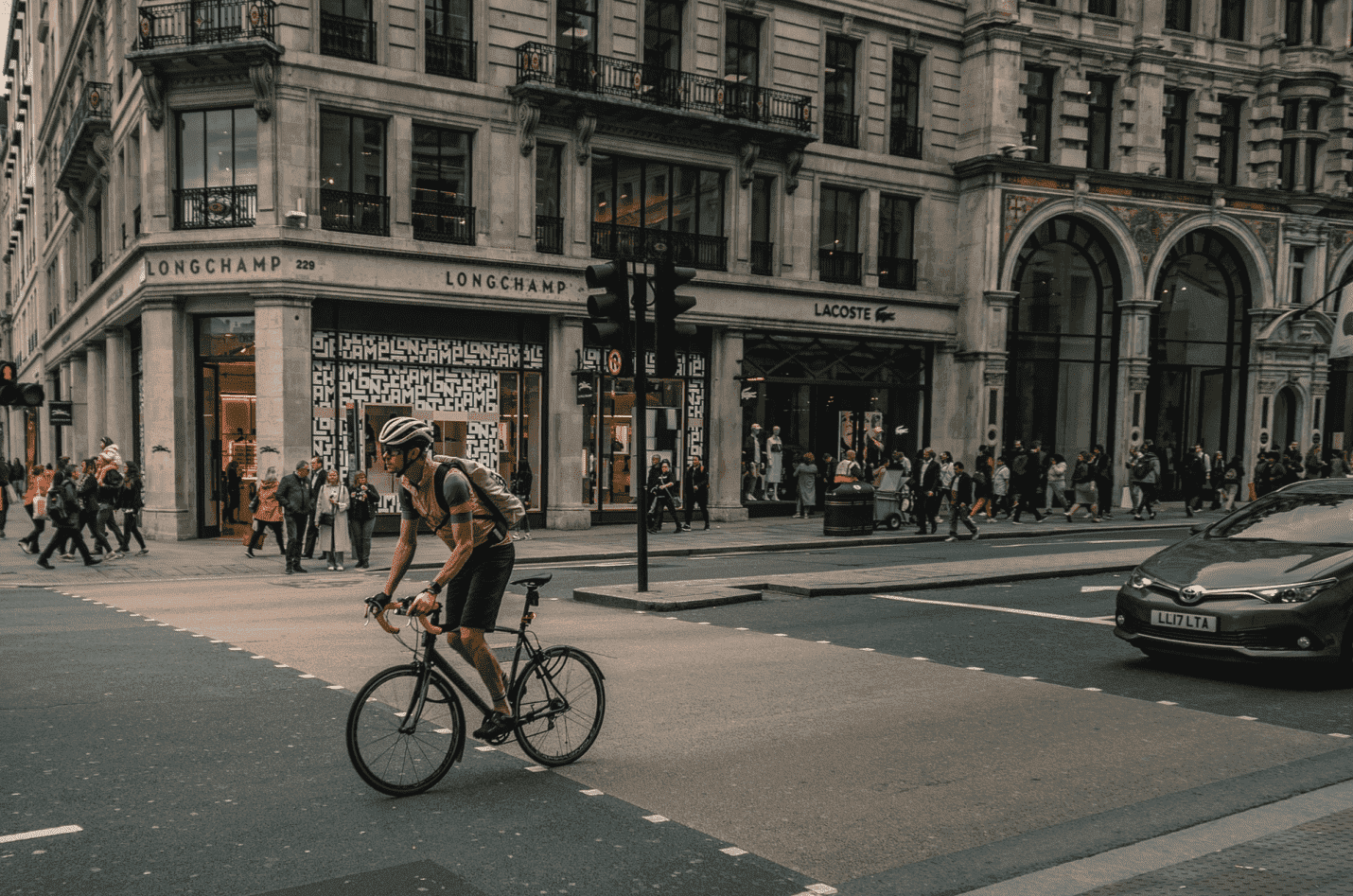One cannot overstate the impact of COVID-19 on transport and mobility.
With everything from how we move to how we work and socialize impacted, governments worldwide made decisions that have significantly impacted individual mobility. Citizens’ mobility habits and behaviors have also seen drastic changes because of the pandemic.
With public transport systems playing such an important role in mobility, cities worldwide are rethinking their mobility strategies. This blog discusses how cities can improve transport and mobility access, implement strategies, and influence citizens’ mobility behaviors.
COVID-19 Impacts on urban transport and mobility
Not too long ago, major cities worldwide were in the midst of what was referred to as a “mobility renaissance” by the Boston Consulting Group (BCG). Shared and connected mobility solutions were on the rise, cities were finding much more convenient and greener solutions to conventional travel and commuting challenges.
Fast forward to December 2019; COVID-19 came out of nowhere. Months later, the world would be at the mercy of the coronavirus, with the pandemic exposing just how vulnerable and unprepared our societies are to a crisis of this magnitude. The coronavirus pandemic unleashed a series of effects on the transportation sector. Experts believe some of these shifts and changes will persist into the foreseeable future.
Some of these include;
- Declining travel demands and use of public transport –UN-Habitat reports that public transport reduced 90% globally as of May 2020, compared to pre-pandemic times. This change, however, was not as significant among lower-income individuals who rely on transit as their primary mode of transportation.
- Reduced carbon emission and traffic accidents decreased with fewer vehicles on the road during lockdowns. A study analyzing the pandemic’s effects on Santander, Spain, found that NO₂ emission and traffic accidents reduced by 60% and 67%, respectively. Separate research at the Eastern Connecticut State University revealed increased traffic accidents despite fewer cars on the road. And as cities continue to open up once again, traffic appears to be nearing pre-pandemic times.
- Increased anticipated spending on mobility, according to BCG. Car ownership has become appealing, with a survey reporting that 60% of Chinese respondents are more willing to buy a car post-lockdown than they were before the pandemic.
- Data from the WEF COVID Action Platform revealed that as much as 14 million Britons would prefer a bike over a car now. According to the Traffic Operations Center of the Municipality of Turin, bike usage in Turin, Italy, increased by about 7% in August 2020, compared to the past year.
While some of the effects of COVID-19 on urban mobility and transport are not easily quantifiable, we can agree that many citizens’ behaviors and decisions on individual mobility and transport changed significantly during the pandemic. The critical question is, what will happen when COVID-19 is under control?
Restoring mobility post-COVID

The world is making progress in combating COVID-19.
We are fortunate enough to live in a time where we can deploy the fastest vaccines ever created to immunize citizens against COVID-19 infection. Public health is well on the path to recovery, but many questions need answers regarding mobility and transport.
- Will mobility and transport in urban centers return to pre-pandemic era levels anytime soon?
- Are these COVID-induced mobility changes likely to phase out anytime soon? Will the effects persist long into the future?
- How should governments and private sector players respond in restoring urban mobility and transport post-pandemic?
Rethinking public policy approaches
Cities across the world are already taking a hard look at their mobility strategies.
For instance, the Toronto Ministry of Transportation (Canada) has made bold policy initiatives to increase walking and cycling infrastructures within the city. Some of these initiatives —which include 25km of new bikeways and a $4 million proposal to create more public spaces and patios, along with new transportation infrastructure in strategic locations— are already boosting citizens’ access to jobs and retail, according to a study by the University of Toronto Engineering. Even more revolutionary is the Mayor of London’s streetspace plan to ensure the city does not return to being car-centric after lockdown regulations are at ease.
Similar scenarios have played out in different cities such as Buenos Aires, Milan, London, Bogota, and Barcelona, to name a few. Cities continue creating opportunities to reimagine more livable cities where we use the curb space, parking space, and roadways differently. There have been visionary leaders like Mayor Bloomberg and his Transportation Commissioner, Janet Sadik-Khan, who converted Times Square into a pedestrian-friendly public space, created bike lanes, and made one-way streets in Manhattan in the early 2000s. COVID-19 has shown us the prescience of such visionaries.
-
Prioritizing public health and safety without compromising accessibility and sustainability
While the pandemic has had devastating effects on several sectors of the transport and mobility industry, governments and industry stakeholders need to rethink public policy approaches, investment, and mobility strategies to prioritize citizen’s health and safety without compromising sustainability and accessibility.
-
Strengthening and encouraging sustainable mobility
Public policies should emphasize discouraging private car travels, promoting public transport, increasing car ownership costs, addressing vehicle access regulations, strengthening and incentivizing walking, cycling, biking, and reasonable urban transportation alternatives.
-
Building public trust in public transport
Much In the same way that governments should promote the adoption of higher public mass transit, governments must work towards building the public’s trust in the governments’ capacity to handle the health risks associated with public transport. Contactless payment options, face mask requirements, disinfection protocols, and thermal screening are a few of the many possibilities to consider in this case.
There’s also the matter of addressing mobility deserts; access to disadvantaged neighborhoods as well as those intentionally segregated by highways should also be addressed. Integrating social equity into urban transportation planning should be a priority, and it’s great that the current administration appears keen on this for the first time.
Other issues such as the technologies related to the safety and reliability of transport systems will also influence citizens’ perception and trust in public transport. They want to know if the transit systems will be reliable, last-mile solutions; whether they are well-integrated so they don’t have to pay multiple times, and arrive at their destination in a timely manner, without much stress and frustration.
-
Creating favorable environments for a mobility renaissance
Additionally, public policy decisions should also consider the need for increased access to quality infrastructure while creating optimal environments for entrepreneurs, ride-sharing, and autonomous vehicles, as well as non-motorized modes of transport, among other things.
Beyond infrastructure, public policy decisions must be made to encourage and ease public and private sector collaboration. Success in the transport sector will require partnership, which relies on favorable and enabling public policy decisions.
AI and data-driven mobility renaissance
Beyond infrastructure investments and creating an enabling environment, governments at all levels and industry stakeholders also need to cooperate at systemic levels and leverage real-time data and artificial intelligence to address mobility challenges.
In his book on Transportation Transformation: How Autonomous Mobility Will Fuel New Value Chains, Evangelos Simoudis stated;
“If on-demand mobility services and vehicle automation are the key ingredients to next-generation mobility, then data and AI are the glue that holds it together because they enable new transportation-related capabilities and novel business models (pg. 191)”
In November 2020, General Motors announced its plan to begin the aggregation and analysis of on-vehicle data. This announcement intends to improve the fluidity of insights and gain a competitive edge with insurance. Similarly, Paris has also announced its plans to consider on-demand mobility services as a possible means of augmenting the pandemic-induced service cutbacks on its transportations systems. Several other cities are going this route as well with private partners like VIA, for instance.
Collaboration among the distinct players in the value chain, such as governments, automotive OEMs, and mobility services providers, will be required to create a network-like value chain. This chain will prove critical in helping congested urban centers across the world surmount their biggest challenges.
Steering mobility towards resilience and sustainability
Companies, governments, and citizens continue adapting to the new way to live, work, and travel. The pandemic has initiated significant changes in citizens’ mobility habits and attitudes. The crisis, despite the costly impacts, provides an opportunity for cities to build on.
Policy and decision-makers should focus on steering urban mobility toward sustainability and resilience going forward. As players in the transport sector adapt to the new normal, the focus on sustainable and inclusive transport systems will undoubtedly continue to impact everything from public and environmental health to societal resilience.
Join the Catalyst Monitor
Join our community, where we push out regular insights to help maintain situational awareness on technological and socioeconomic trends.



